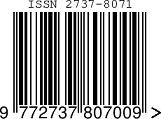Detection of Fake News Using Machine Learning
Keywords:
news, fake news detection, machine learning, passive aggressive classifierAbstract
For some past recent years, largely since people started obtaining quick access to social media, fake news have became a serious downside and are spreading a lot of and quicker than the true news. As incontestable by the widespread effects of the big onset of fake news, humans are incapable of detecting whether the news is genuine or fake. With this, efforts have been made to research the method of fake news detection. The most popular and well-liked of such efforts is “blacklists” of sources and authors that don't seem to be trustworthy. Whereas these tools area helpful, so as to form a more complete end to end resolution, we also account for tougher cases wherever reliable sources and authors unharnessed false news. The motive of this project is to form a tool for investigation the language patterns that characterize wrong and right news through machine learning. The results of this project represent the flexibility for machine learning to be helpful during this task. We have made a model that detects several instinctive indicator of right and wrong news.
Downloads
References
Michele Banko, Michael J Cafarella, Stephen Soder-land, Matthew Broadhead, and Oren Etzioni. Open information extraction from the web. InIJCAI'07.
Amr Magdy and NayerWanas. Web-based statistical fact checking of textual documents. In Proceedings of the 2nd international workshop on Search and mining user-generated contents, pages 103{110. ACM,2010.
Giovanni Luca Ciampaglia, Prashant Shiralkar,Luis M Rocha, Johan Bollen, Filippo Menczer, andAlessandroFlammini. Computational fact checking from knowledge networks. PloS one,10(6):e0128193,2015.
https://www.cjr.org/analysis/facebook-rohingya-myanmar-fake-news.php
Kai Shu, Amy Sliva, Suhang Wang, Jiliang Tang, Huan Liu. "Fake News Detection on Social Media", ACM SIGKDD Explorations Newsletter,2017
Local tampering detection in video sequences Paolo Bestagini, Simone Milani, Marco Tagliasacchi, StefanoTubaro
Andrew Ward, L Ross, E Reed, E Turiel, and T Brown. Naive realism in everyday life: Implications for social conict and misunderstanding. Values and knowledge, pages 103{135,1997.
Wikipedia tf-idf https://en.wikipedia.org/wiki/Tf%E2%80%93idf
Passive aggressive algorithm https://www.geeksforgeeks.org/passive-aggressive-classifiers/
“Liar, Liar Pants on Fire”: A New Benchmark Dataset for Fake News Detection, William Yang Wang
Downloads
Published
How to Cite
Issue
Section
License
Copyright (c) 2021 Mayank Singh Rawat, Aviral Srivastava, Shubh Aggarwal

This work is licensed under a Creative Commons Attribution 4.0 International License.
Copyright on any article in the International Journal of Engineering and Applied Physics is retained by the author(s) under the Creative Commons license, which permits unrestricted use, distribution, and reproduction provided the original work is properly cited.
License agreement
Authors grant IJEAP a license to publish the article and identify IJEAP as the original publisher.
Authors also grant any third party the right to use, distribute and reproduce the article in any medium, provided the original work is properly cited.















